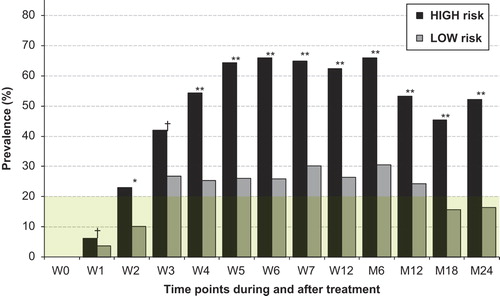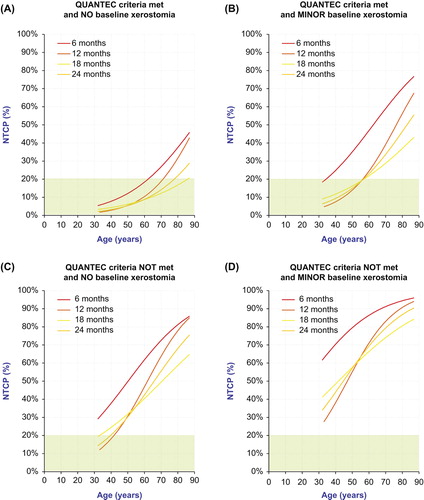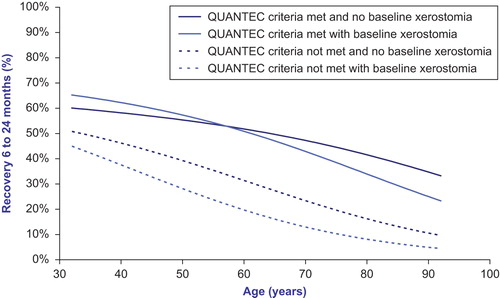Figures & data
Table I. Patient characteristics.
Figure 1. Patient-rated moderate-to-severe xerostomia stratified by risk group (EORTC QLQ-HN35). The p-values refer to the chi-square test, to test for significant differences between high and low risk patients. *p-value > 0.05, **p-value< 0.05, †p-value NS.

Table II. Differences in baseline characteristics of the IMRT treated patients classified as low risk versus IMRT treated patients classified as high risk.
Table III. Odds ratios (OR) for potential risk factors in the development of patient-rated xerostomia for patients completed a follow up of 24 months after treatment.
Figure 2. Predicted risk for patient-rated moderate-to-severe xerostomia (EORTC QLQ-HN35) at 6, 12, 18 and 24 months after for different categories; QUANTEC criteria (met vs not met) and baseline xerostomia (none vs minor) as function of increasing age. All curves are based on a multivariate logistic regression analysis for 132 patients with a complete follow up of 24 months.

Figure 3. Percentage of recovery of moderate-to-severe xerostomia as a function of age, stratified by the 4 risk group categories shown in . The results are based on multivariate logistic regression analysis using the data of 132 patients with a complete dataset at all time points. The curves indicate the estimated percentages of patients with moderate to severe xerostomia 6 months after completion of treatment that will have been recovered at 24 months. Younger patients show higher percentages of recovery than elderly patients. Patients in whom the QUANTEC criteria were met show higher percentages of recovery than in whom they were not met.

